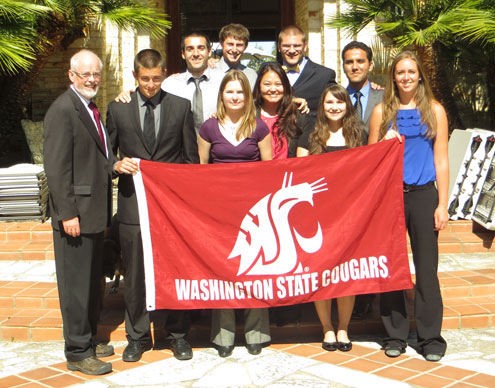 “Conversion of Microalgae to Jet Fuel: Process Design and Simulation” by Hui-Yuan Wang, David Bluck, and Bernard J. Van Wie was recently selected as the cover story for the June 2014 edition of Bioresource Technology.
“Conversion of Microalgae to Jet Fuel: Process Design and Simulation” by Hui-Yuan Wang, David Bluck, and Bernard J. Van Wie was recently selected as the cover story for the June 2014 edition of Bioresource Technology.
Accompanied by over-population and further industrialization, energy shortages are becoming the biggest challenge that our hydrocarbon-driven society will face in the near future. The non-renewability of fossil fuels will be the main impediment for energy sustainability in human society. At the same time, use of fossil fuels leads to a net production of CO2, a greenhouse gas believed to be directly related to global warming. In contrast, biomass is a renewable resource and carbon neutral in principle. The utilization of biomass as an energy feedstock is one of the most promising ways to reduce the energy dependence on non-renewable fossil resources and at the same time reduce the overall carbon footprint.
In the paper, the researchers show the utility of PRO/II software for simulating biomass related processes and use a PRO/II simulation to demonstrate the feasibility of jet fuel production from microalgae. They also use a PRO/II case study to show optimal hydrotreating conditions for making Jet B fuel and show that recovering hydrogen from the byproduct reforming adds up to 15 percent of the product’s value.
This work was partially supported by Schneider Electric S.A. (formerly Invensys Ltd.), the makers of Pro/II, through a project entitled “Pro II Simulation Comparison with Pilot Plant or Plant Data for Biomass Conversion to Biofuels” and partially by the Washington State University Agricultural Research Center though Hatch Project #WPN00807 entitled “Fundamental and Applied Chemical and Biological Catalysts to Minimize Climate Change, Create a Sustainable Energy Future, and Provide a Safer Food Supply” through the U.S. Department of Agriculture National Institutes for Food and Agriculture program.








